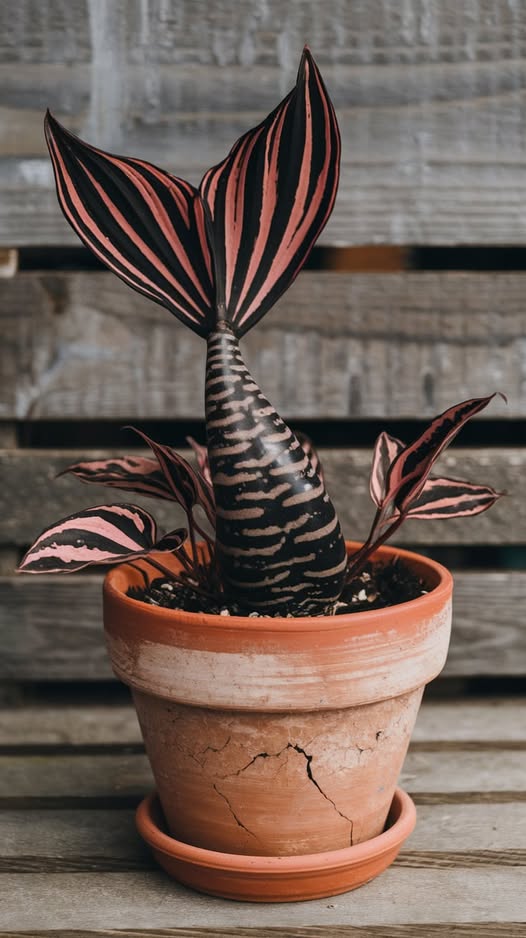Mermaid tail plants, commonly known as Crested Senecio vitalis or Euphorbia lactea ‘Cristata,’ captivate plant enthusiasts with their whimsical shapes, reminiscent of mythical mermaid tails. These succulents, celebrated for their sculptural beauty and versatility, are more than just botanical treasures—they’re a gateway to connecting with nature’s magic and mythology. Dive into the fascinating world of mermaid tail plants and discover why they’ve become a must-have for homes and gardens.

Physical Appearance and Unique Structure
Crested Growth Patterns
The signature feature of mermaid tail plants is their crested growth, where stems branch out in wave-like patterns instead of growing vertically. This phenomenon results from a genetic mutation that disrupts the plant’s apical dominance, creating undulating, aquatic-like forms. The result is a visual marvel that mimics the graceful motion of mermaid tails, adding a touch of fantasy to any space.
Color Variations and Textures
These plants exhibit a stunning array of colors, from vibrant greens to muted pastels, often accented by variegations in white, cream, or pink. Their textures range from smooth and glossy to textured or spiny, enhancing their sculptural appeal. These characteristics make mermaid tail plants versatile additions to both minimalist and eclectic designs.
Why Mermaid Tail Plants Are So Alluring
Aesthetic Value in Design
Mermaid tail plants serve as living art, their organic forms lending a unique touch to indoor décor and outdoor gardens. Their sculptural silhouettes create focal points in minimalist settings or contribute to the whimsical vibe of bohemian or coastal-inspired spaces. Whether potted alone or as part of a succulent arrangement, they add elegance and intrigue.
Symbolism and Mythological Connections
These plants evoke the enduring allure of mermaids, mythical creatures associated with mystery, beauty, and the ocean. By cultivating mermaid tail succulents, plant enthusiasts infuse their living spaces with an air of fantasy and imagination, fostering a deeper connection to the mythical and natural worlds.
Caring for Mermaid Tail Plants
Light Requirements
Mermaid tail plants thrive in bright, indirect sunlight, ideally receiving 6 hours of light daily. Position them near south-facing windows or use grow lights indoors. While they tolerate partial shade, insufficient light can lead to leggy growth and a loss of their signature compact form.
Watering Guidelines
As drought-tolerant succulents, these plants prefer well-draining soil and should dry out completely between waterings.
- Growing Season: Water when the soil is dry to the touch.
- Dormant Periods (Winter): Reduce watering frequency to prevent root rot.
- Tip: Look for signs like shriveled leaves to adjust watering accordingly.
Propagation Techniques
- Stem Cuttings: Cut a healthy stem, let it callus for a few days, and plant in a well-draining mix. This method allows for easy multiplication.
- Grafting: Combine rootstock and scion from different varieties for unique hybrids. This technique is ideal for experienced gardeners.
Creative Uses and Benefits
In Home Décor
Mermaid tail plants elevate spaces with their dramatic forms, serving as centerpieces in terrariums or enhancing hanging baskets and plant walls. Incorporate them into DIY projects like macramé hangers or decorative planters for personalized charm.
In Outdoor Gardens
These succulents are perfect for low-water landscaping, offering a sustainable alternative to water-intensive plants. They’re particularly suited to xeriscaping, where their drought tolerance and sculptural forms shine.
Ecological Contributions
Mermaid tail plants support local ecosystems by providing refuge for beneficial insects. Their water efficiency and adaptability to arid climates make them eco-friendly choices for modern gardening practices.
Challenges and Solutions
Common Pests and Diseases
While hardy, mermaid tail plants may attract pests like aphids, mealybugs, or spider mites. Combat these with:
- Organic insecticides
- Beneficial insects like ladybugs
- Regular inspection and early intervention
Environmental Factors
Maintain moderate temperatures and low humidity. Overwatering and exposure to frost or intense sunlight are common pitfalls, so use well-draining soil and provide partial shade in extreme conditions.
Cultural and Psychological Significance
Fostering Imagination
Mermaid tail plants evoke a sense of wonder, blending nature’s artistry with the allure of mythology. Their fantastical forms inspire creativity and storytelling, making them beloved by both children and adults.
Therapeutic Benefits
Caring for plants like mermaid tails is known to reduce stress, enhance focus, and foster a sense of accomplishment. Their whimsical shapes bring joy and a sense of playfulness to daily life, making them more than just decorative items—they’re sources of emotional well-being.
Sourcing Mermaid Tail Plants
Online Platforms
Retailers like Etsy and specialty succulent websites offer a variety of mermaid tail plants, ranging from common to rare cultivars. Look for sellers with positive reviews and detailed care instructions.
Local Nurseries and Gardening Clubs
Shopping locally allows you to personally inspect plants for quality. Joining gardening clubs can also lead to exchanges or swaps of rare varieties, building community connections.
Conclusion
Mermaid tail plants are living embodiments of nature’s whimsy and resilience, offering beauty, symbolism, and ecological benefits. Their care requires mindfulness, but the rewards—captivating aesthetics, mental relaxation, and a connection to mythological lore—are worth the effort.
Whether you’re an experienced gardener or a curious novice, introducing mermaid tail plants into your home or garden invites a world of enchantment. Let these succulents transform your space into a sanctuary of imagination, creativity, and natural splendor.





